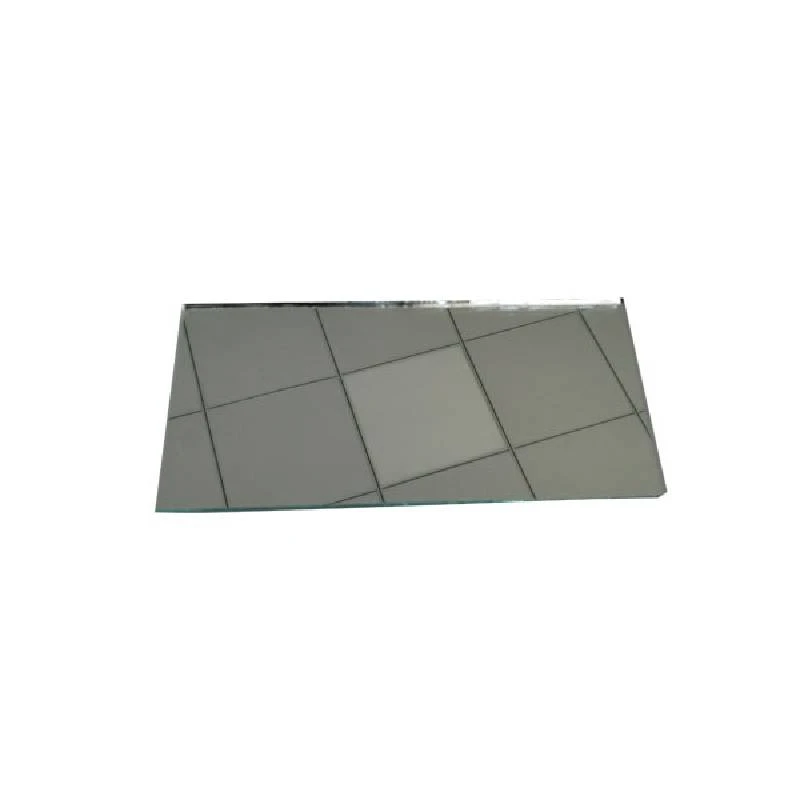The Benefits and Applications of Heat Treated Glass
Heat treated glass, often referred to as tempered glass, is a form of safety glass that has undergone a special thermal process to enhance its strength and durability. This innovative material is widely utilized in various applications due to its unique properties and benefits. In this article, we will explore the process of heat treating glass, its advantages, and the diverse applications it serves in today's world.
The Process of Heat Treatment
The process of creating heat treated glass involves heating the glass to a temperature of around 600°C (1112°F) and then rapidly cooling it. This method increases the glass's internal strength by inducing compressive stress on the surface and tensile stress within the core. The rapid cooling makes the glass more resistant to impact, thermal stress, and breaking.
There are two primary methods of heat treating glass tempering and heat strengthening. Tempered glass undergoes a rigorous heating and cooling process, making it approximately five to six times stronger than standard glass. In contrast, heat-strengthened glass is heated to a lower temperature and cooled at a slower rate, resulting in improved strength, albeit not as strong as tempered glass.
Advantages of Heat Treated Glass
1. Safety One of the primary advantages of heat treated glass is its safety features. When broken, tempered glass shatters into small, blunt pieces rather than sharp shards, significantly reducing the risk of injury. This makes it an ideal choice for applications in public spaces, such as shopping malls, schools, and hospitals.
2. Strength The enhanced strength of heat treated glass allows it to withstand greater loads and impacts. This makes it suitable for use in high-traffic environments and in structures where safety and durability are critical.
3. Thermal Resistance Heat treated glass can endure substantial temperature fluctuations without cracking or breaking. This property is particularly valuable in areas with extreme weather conditions or where the glass is exposed to high temperatures, such as in facades or skylights.
4. Design Flexibility Heat treated glass is available in various shapes, sizes, and finishes, offering architects and designers the flexibility to create stunning designs without compromising on safety or functionality. It can be manufactured in different colors and patterns, allowing for creative expression in modern architecture.
heat treated glass
5. Energy Efficiency With advancements in technology, heat treated glass can also be coated with low-emissivity (low-E) materials to enhance thermal insulation. This not only improves energy efficiency in buildings but also contributes to sustainability efforts by reducing energy consumption.
Applications of Heat Treated Glass
Heat treated glass is used in a wide range of applications across various industries, including
1. Architecture and Construction In modern buildings, heat treated glass is often used for curtain walls, windows, and facades. Its strength and thermal resistance make it an ideal choice for creating expansive glass surfaces that allow for natural light while ensuring safety.
2. Automotive Industry Tempered glass is commonly used in vehicle windows, including side and rear windows, due to its strength and safety features. In the event of an accident, the glass shatters safely, minimizing the risk of injury to passengers.
3. Furniture and Interior Design Heat treated glass is frequently used in furniture, such as tables and shelves, where both aesthetics and durability are essential. Its ability to combine beauty with functionality makes it a popular choice among designers.
4. Shower Doors and Partitions In bathrooms, tempered glass is a preferred material for shower doors and partitions, thanks to its resistance to moisture and ease of maintenance.
5. Displays and Signage Retail environments often use heat treated glass for displays and signage, benefiting from its clarity and resistance to breakage, which is crucial for maintaining an attractive customer experience.
In conclusion, heat treated glass offers a multitude of advantages, making it a crucial material in various applications. From enhancing safety to providing design flexibility and energy efficiency, its role in modern architecture, automotive design, and interior furnishings continues to grow. As technology advances, the potential for heat treated glass will likely expand, leading to even more innovative uses in the future.
 Afrikaans
Afrikaans  Albanian
Albanian  Amharic
Amharic  Arabic
Arabic  Armenian
Armenian  Azerbaijani
Azerbaijani  Basque
Basque  Belarusian
Belarusian  Bengali
Bengali  Bosnian
Bosnian  Bulgarian
Bulgarian  Catalan
Catalan  Cebuano
Cebuano  Corsican
Corsican  Croatian
Croatian  Czech
Czech  Danish
Danish  Dutch
Dutch  English
English  Esperanto
Esperanto  Estonian
Estonian  Finnish
Finnish  French
French  Frisian
Frisian  Galician
Galician  Georgian
Georgian  German
German  Greek
Greek  Gujarati
Gujarati  Haitian Creole
Haitian Creole  hausa
hausa  hawaiian
hawaiian  Hebrew
Hebrew  Hindi
Hindi  Miao
Miao  Hungarian
Hungarian  Icelandic
Icelandic  igbo
igbo  Indonesian
Indonesian  irish
irish  Italian
Italian  Japanese
Japanese  Javanese
Javanese  Kannada
Kannada  kazakh
kazakh  Khmer
Khmer  Rwandese
Rwandese  Korean
Korean  Kurdish
Kurdish  Kyrgyz
Kyrgyz  Lao
Lao  Latin
Latin  Latvian
Latvian  Lithuanian
Lithuanian  Luxembourgish
Luxembourgish  Macedonian
Macedonian  Malgashi
Malgashi  Malay
Malay  Malayalam
Malayalam  Maltese
Maltese  Maori
Maori  Marathi
Marathi  Mongolian
Mongolian  Myanmar
Myanmar  Nepali
Nepali  Norwegian
Norwegian  Norwegian
Norwegian  Occitan
Occitan  Pashto
Pashto  Persian
Persian  Polish
Polish  Portuguese
Portuguese  Punjabi
Punjabi  Romanian
Romanian  Russian
Russian  Samoan
Samoan  Scottish Gaelic
Scottish Gaelic  Serbian
Serbian  Sesotho
Sesotho  Shona
Shona  Sindhi
Sindhi  Sinhala
Sinhala  Slovak
Slovak  Slovenian
Slovenian  Somali
Somali  Spanish
Spanish  Sundanese
Sundanese  Swahili
Swahili  Swedish
Swedish  Tagalog
Tagalog  Tajik
Tajik  Tamil
Tamil  Tatar
Tatar  Telugu
Telugu  Thai
Thai  Turkish
Turkish  Turkmen
Turkmen  Ukrainian
Ukrainian  Urdu
Urdu  Uighur
Uighur  Uzbek
Uzbek  Vietnamese
Vietnamese  Welsh
Welsh  Bantu
Bantu  Yiddish
Yiddish  Yoruba
Yoruba  Zulu
Zulu 

